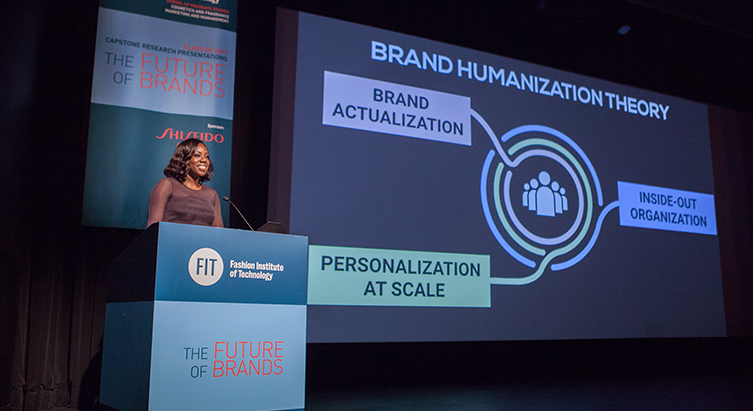Consumers now have the ability to take down a brand or retailer in 140 characters or less, according to the graduate students of the Fashion Institute of Technology’s Master of Professional Studies (MPS) in Cosmetics and Fragrance Marketing and Management (CFMM). During a private press event, sponsored by Shiseido, on June 20 the graduate students presented their findings, insights and recommendations, underscoring the power and influence millennial consumers now have on a brand’s direction and future.
The group revealed the results of their research project titled, “FIT 2017 Millennial Consumer Expectation and Brand Perception Survey,” which fielded a total of 4,000 responses from consumers ranging from ages 18-34. The survey discovered that millennials are driven to purchase products if they feel an emotional connection to a brand, with 48 percent of survey respondents saying they are more likely to buy from a brand if they know the people behind it. The group went on to explain that consumers are looking for a combination of transparency, experience and community between brands and themselves. The researchers called this combination of factors The Trust Loop, noting that 47 percent of millennials want the opportunity to provide feedback to brands and 45 percent would stop purchasing from a brand that doesn’t own up to its mistakes. The graduate students further examined the data with a focus on two thesis areas: Brand Expression and Brand Experience.
Brand Expression – The students devised the concept of Brand Humanization Theory, which is made up of three elements:
- Brand Actualization – Brands must identify a deeper purpose, beyond the traditional mission statement. According to a study at Unilever, purpose-driven brands grow 30 percent more than brands with an unclear purpose. The students also encourage brands to think big, but act small, citing that niche brands are winning across multiple categories. Additionally, as people look to communities to gain a sense of belonging, brands will succeed if they foster the sense of community. Research shows that branded communities can drive 12 time more traffic and almost 8 times more shoppers than all other social channels combined.
- Personalization of Scale – Instead of focusing on targeting consumers, brands should try to develop individual connections, rather than marketing to the masses. An example of this is utilizing consumer data to improve their lives and offer convenience.
- Inside Out Organization – Consumers see brand employees as credible sources of information, so it’s beneficial to leverage employees as ambassadors to develop a more authentic engagement with them, rather than hiring external influencers who have no brand loyalty. Other recommendations include emphasizing employee relationship management and cultivating a fluid workforce where ideas can flow freely.
The above three elements combined make up the Consumer Experience Gap, a concept the study defines as a symbiotic relationship between a brand and its community, which will allow for a brand to be agile and responsive, without losing its core DNA.
Brand Experience – The graduate students found that consumers are evolving faster than retailers, a phenomenon they define as the Consumer Experience Gap. With the idea that only the most adaptable retailers would survive, Darwin’s theory of VISTA was adapted to develop five recommendations for retailers.
- Variation: Flexibility with store locations and formats could provide more relevant and unique shopping experiences. For example, the students recommend retailers consider leasing a portion of their space to brands, ranging from food and entertainment, to increase foot traffic.
- Inheritance: Evolve the role of retail associates via training to better connect and serve consumers. Sephora, for example, offers its employees daily trainings and career path planning, and has one of the highest consumer satisfaction ratings in the industry.
- Selection: Provide immersive experiences that are prioritized over the need for transactions. According to the research, fifty percent of U.S. consumers say they want stores to serve a higher function outside of selling products. One retailer doing this well is Style Nanda in Korea, which merges the experience of a hotel with fashion and features interactive rooms meant to be photographed for social media.
- Time: Address consumers’ need for time, as time will soon be the #1 currency for future shoppers.
- Adaption: Consumers will evolve into seekers who want to spend their time pursuing fulfilling experiences, which means retailer and brands must anticipate and adapt to new ways to interact with them in their daily lives.
To watch a video of the full 2017 Capstone Presentations, click here.




